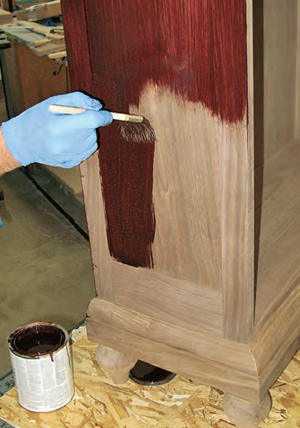
I built a bureau this summer and have used Minwax® liquid stain with a cloth (three coats) in between drying times. Should I use more coats of stain (which is a favorable color now), or should I use 1,000-grit sanding paper, or what type of wax to use to bring out a good polishing finish? – Reg Smith
Tim Inman: “Minwax” is a brand name. The stains are not “finishes” in the traditional sense. They are simply colors. So, if you have the color you desire, then stop. More coats will add a little more color, but they do not build up a protective surface coating. If it is protection you’re after, you need to shift to a film-forming material like a varnish or drying oil, or lacquer or even shellac.
Chris Marshall: Staining colors the wood, but doesn’t serve as a protective topcoat. I think the product labels that call stain a “wood finish” are misleading, because that’s not what it does. If you are happy with the color, you’re all done with the staining stage of your project. Now it’s time to seal the wood with a film finish. Varnish, shellac or lacquer are all excellent choices. Wax comes last, to buff the finish when it’s fully dry. Some woodworkers use it as their final finish, but it doesn’t offer much protection on its own as it doesn’t form a hard film on the surface of the wood. If you’re new to wood finishing, try a wipe-on poly for your project. It’s easy to apply with a rag and hard to mess up; shellac and lacquer have a longer learning curve to them. Apply three or four coats of wipe-on poly, straight from the can, and you should be all set. Then rub on some wax if you like. It isn’t necessary, but wax does give the wood a nice sheen and makes it feel velvety smooth to the touch.





